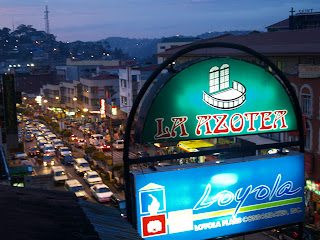
A few years ago, my wife and I journeyed to the country’s photography and videography hub in Quiapo, Manila – Hidalgo St., to purchase a piece of equipment. On our way there, anticipating the traffic, noise and air pollution in the area, we told ourselves to look for the camera we want as fast as we can and get out of there just as fast. After checking out several shops for options, we found what we wanted within an hour.
It was already lunchtime by then, and we decided to grab a bite before finally making the purchase. We walked a couple of blocks looking for a place to eat and found ourselves right below the LRT’s Carriedo station and while I remembered the place to be very congested, dirty and noisy, we were surprised and awed by the sight that greeted us – a nicely paved promenade, landscaped pocket gardens and towering potted plants, comfortable park benches and instead of carbon monoxide-spewing vehicles, we saw families taking walks, children running around playing, an old couple seated on a park bench reading the day’s paper, etc. We were confused for a while, we thought we took a wrong turn somewhere and ended up anywhere but in the notoriously polluted Avenida. We easily found a place to eat and after having a hearty lunch of good Chinese food, we forgot about the camera for a moment and checked out the different establishments in the area.
By the time we remembered to purchase what we went there for, we have added several items to our original shopping list of one – sunglasses, a few shirts and pants, toys for the kids, a tool box full of tools, etc.
Fast forward four years later 250 kilometers up north – a proposal has been made to close the once lovely, pretty and cozy, but now notoriously congested, polluted and not-so-pretty Session Road to vehicular traffic. A lot of people are looking forward to it, majority of the businesses along the famous road are opposing it.
They have so many reasons for going against the plan, among them having to walk to their place of business instead of parking their car right infront of it, but it all of it fall under one consideration – less revenues. Let’s discuss that.
Four years ago, in Avenida, we were set to buy only what we went there for, but the beautiful and relaxing atmosphere made us stay longer than we planned to in the area and ended up buying way more than we have intended. Today, we try as much as we can to avoid staying long anywhere in Session Road for the heavy traffic there, which we only used to see once in a while during peak tourist seasons, is now an all-day, everyday occurrence, it’s heartbreaking. As an entrepreneur doing business in Session Road, unless you’re a car repair shop or a gasoline station, you don’t want cars on Session Road, you want people, and that’s what the pedestrianization of the road would bring.
And so what if it does result in a slight cut in your business income? Think also of the thousands of people who will benefit from it: without the toxic fumes emitted by dilapidated colorum taxis and other vehicles, maybe plants and trees would survive along the road, the air our children will breathe will be much healthier and our city will start becoming beautiful again. You can’t put a price on that. Besides, plants and trees are much prettier than your imposing commercial billboards.
And between a handful of businessmen and the health of thousands of residents, the choice is clear.
And in the meantime, while we’re waiting for the pedestrianization of Session Road to happen, turn off your loud speakers outside your establishments, it’s bad enough that you’ve contributed to the road’s “uglification,” don’t add to the noise pollution anymore.
Today, because the current administration of the City of Manila decided to open up Avenida to vehicles again, and it’s back to being one of the country’s most polluted areas. Damn politics.
I hope our city officials would start thinking of the greater good instead of the interests of the elite few.


 After each matinee, we held an open forum where the students can direct questions to the cast and artistic staff or make comments about the performance. Among the questions thrown to us were:
After each matinee, we held an open forum where the students can direct questions to the cast and artistic staff or make comments about the performance. Among the questions thrown to us were:

 “How long and what did it take you to put this together?” A month of brainstorming, a few months of 4-hour rehearsals everyday, a hundred photographs and ten paintings, lots of scrap jute sacks, a hundred hours of video footage, and an unlimited supply of love for this city from the group’s members.
“How long and what did it take you to put this together?” A month of brainstorming, a few months of 4-hour rehearsals everyday, a hundred photographs and ten paintings, lots of scrap jute sacks, a hundred hours of video footage, and an unlimited supply of love for this city from the group’s members.













